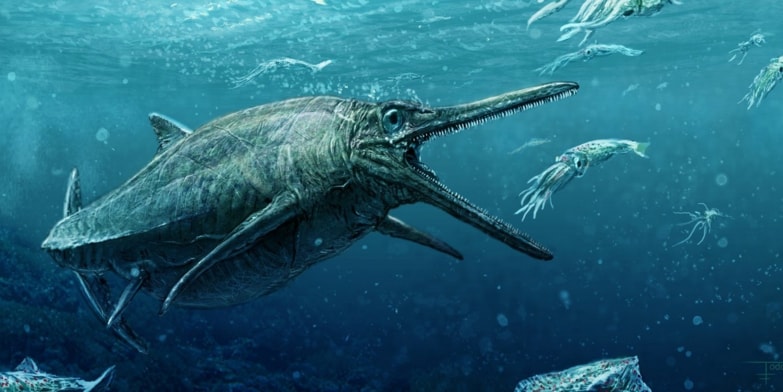The legend of the Loch Ness Monster is something that science can't stop. And maybe it's just as well. After all, who needs "facts" and "evidence" messing with everyone's fun? If people want to believe that there's a sea monster dwelling in the chilly depths of a Scottish lake, where's the harm?
But, if you're one of those folks who prefers your sea beasts be a little more hands on, fear not! The mighty Scottish Highlands have you covered there, too. Meet the Storr Lochs Monster. Okay, it's not alive either, though it definitely was at one time. Around 170 million years ago, it was a large ichthyosaur (say IHK-thee-oh-sawr) hunting in the seas of the Jurassic Period (about 201 to 145 million years ago).
Middle Jurassic Park
The fossil that is the Storr Lochs Monster is one of the most complete skeletons of a prehistoric sea reptile ever found in Scotland. And just in case that doesn't sound too significant, the Isle of Skye—a Scottish island where the fossil was discovered—is one of the few areas on Earth where Middle Jurassic Period fossils (176 to 161 million years ago) can be found. Many areas famous for dinosaur fossils, such as Hell Creek in Montana, are full of deposits from other times during the Age of Dinosaurs, such as the Cretaceous Period (145 to 66 million years ago)—this period was home to dinos like Triceratops and T rex. But for reasons scientists don't fully understand, Middle Jurassic Period fossils are very rare. This makes the Isle of Skye a special place for dino hunters.
Even so, fossils of this particular species of ichthyosaur are still quite rare there. These bones were actually found 50 years ago in 1966, nearby the Storr Lochs Power Station (solving the mystery of its name!). It was found by Norrie Gillies, who is the power plant manager, and not an archeologist (yay, amateur scientists!). The massive gap between its discovery and final unveiling comes down to this—it's no easy task extracting a nearly complete skeleton of a 13 year-old sea reptile from solid rock.
A toothy predator
And just what was an ichthyosaur such as the Storr Lochs Monster like in real life? Well, you should probably be happy they're not still alive. They were the size of a large shark and featured a long, narrow snout full of hundreds of pointy teeth. This mouth was perfect for grabbing fish and squid. Or you (just kidding!).
"Ichthyosaurs like the Storr Lochs Monster ruled the waves while dinosaurs thundered across the land," said Steve Brusatte of the University of Edinburgh in a press release. "Their bones are exceptionally rare in Scotland, which makes this specimen one of the crown jewels of Scottish fossils. It's all thanks to the keen eye of an amateur collector (Norrie Gillies) that this remarkable fossil was ever found in the first place, which goes to show that you don't need an advanced degree to make huge scientific discoveries."
 An artist's painting of the Storr Lochs Monster, an ichthyosaur skeleton discovered on the Isle of Skye, Scotland. (Todd Marshall)
An artist's painting of the Storr Lochs Monster, an ichthyosaur skeleton discovered on the Isle of Skye, Scotland. (Todd Marshall)










How big was it?